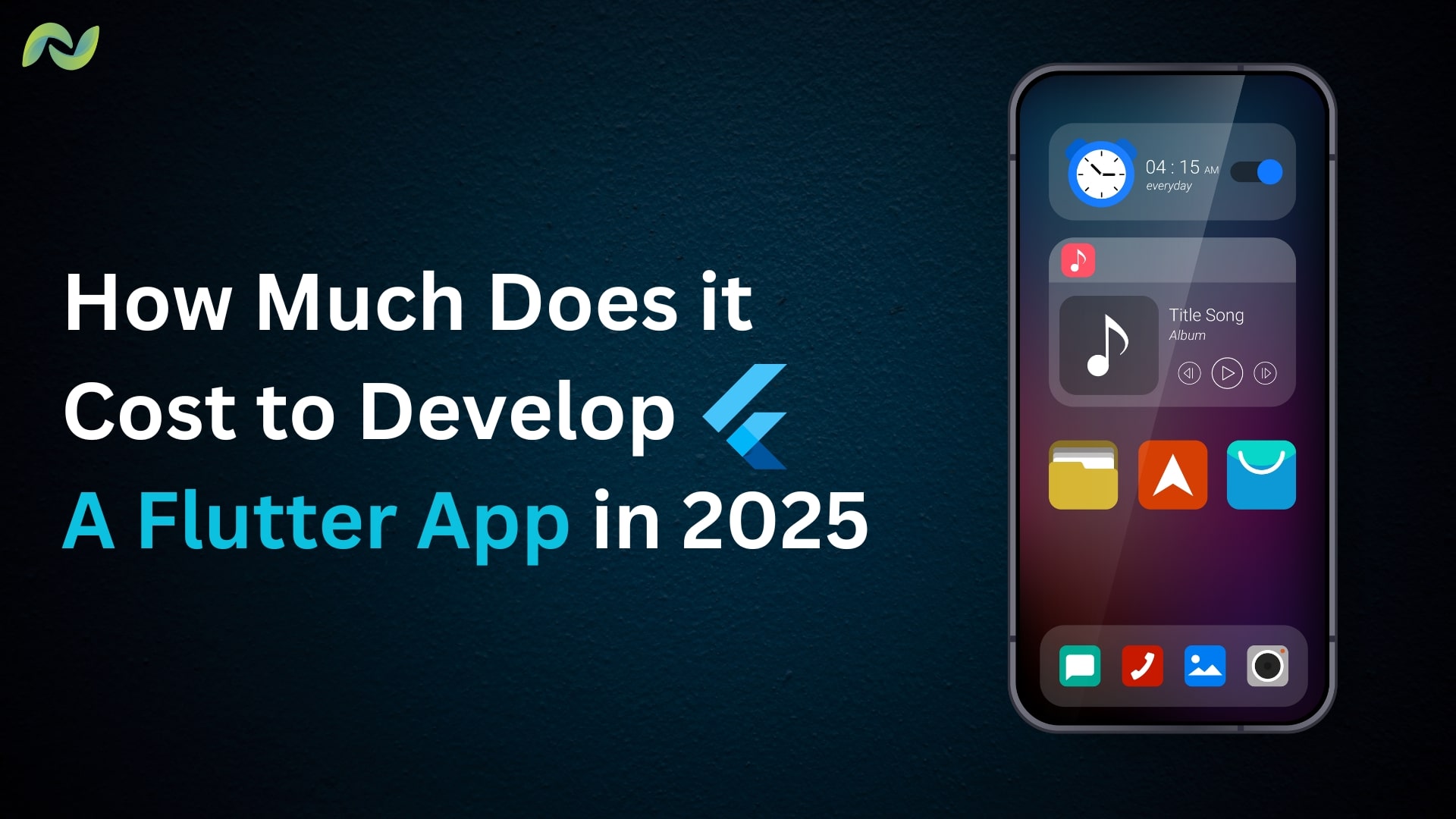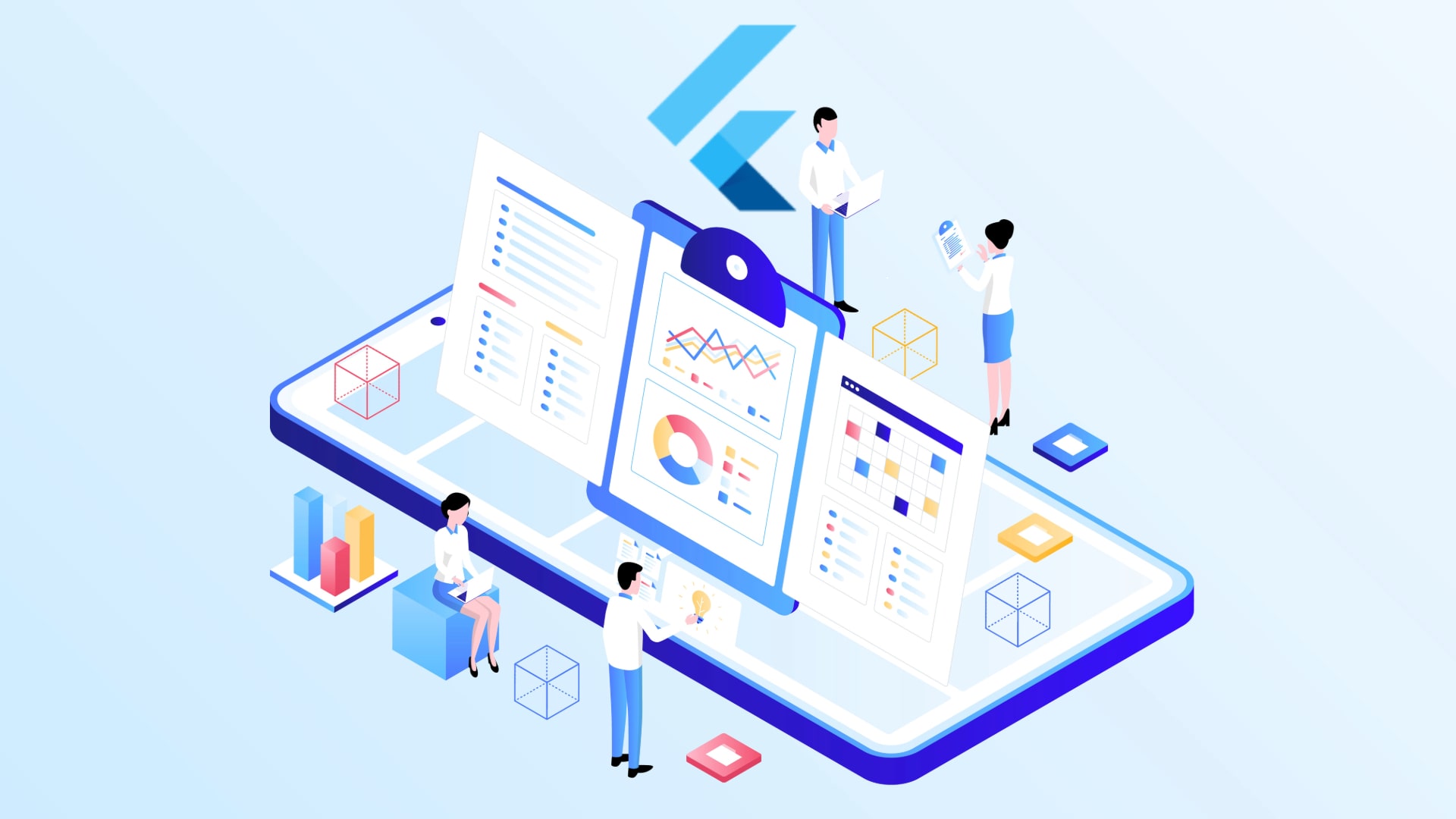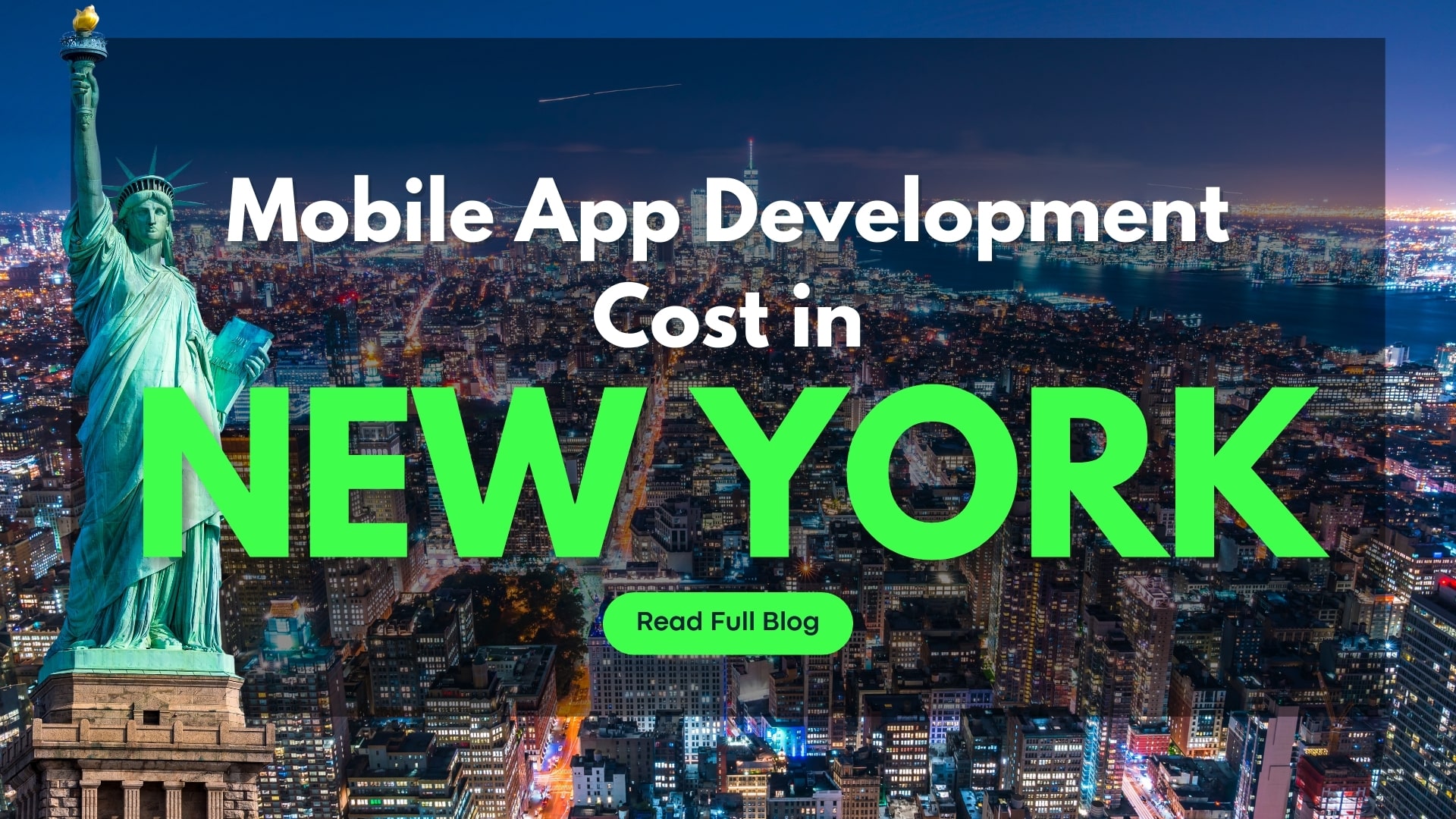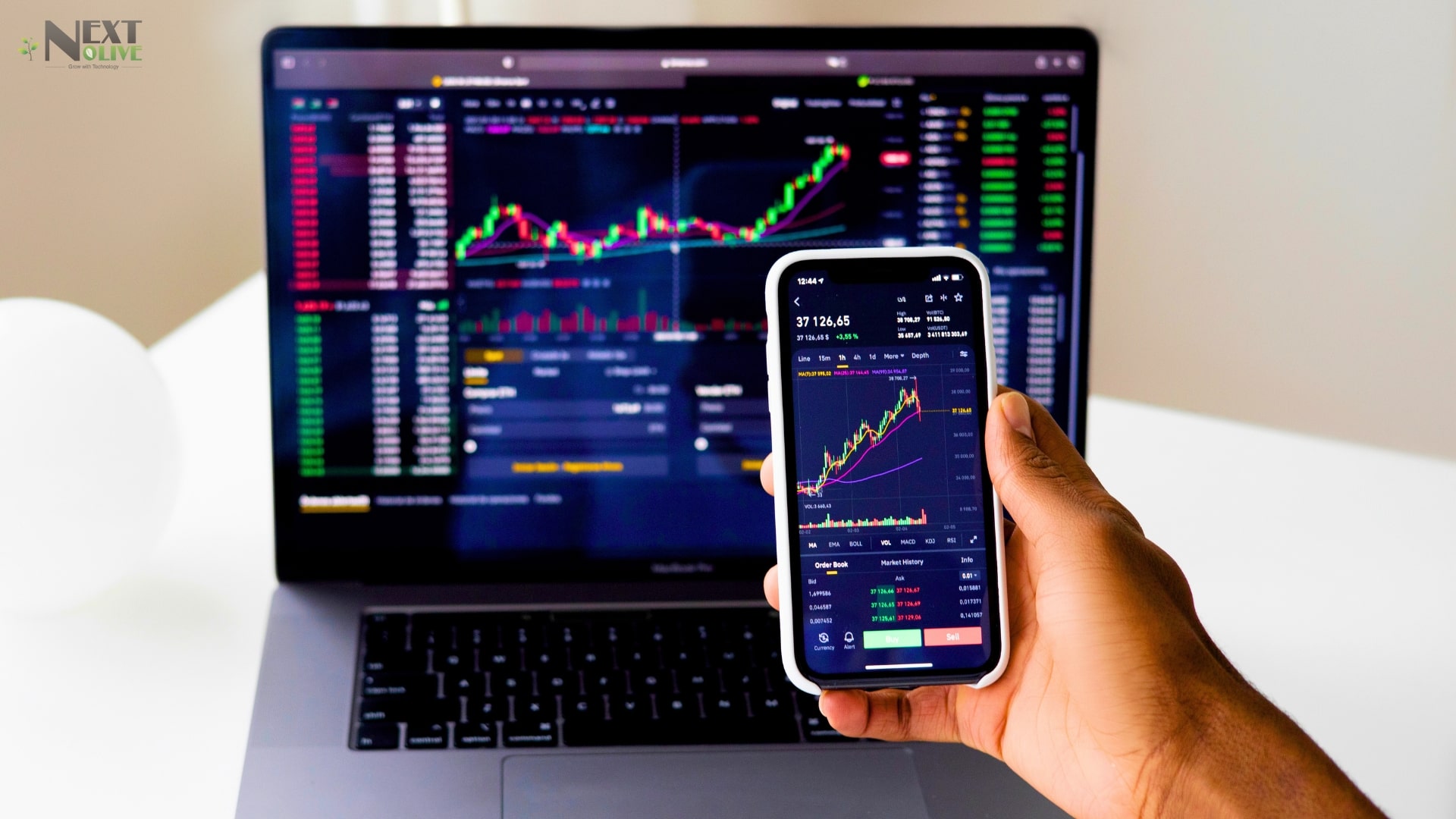How Much Does it Cost to Create a Flutter App?
In 2025, there are many remarkable technologies and frameworks for developing cross-platform applications. One such technology is Flutter. But when it comes to the cost of Flutter app development, many important questions arise with it, such as what would be the features, what would be the development process, and many more. Developing a Flutter app is a big task, and understanding the cost and other aspects can make the process much simpler. The Flutter app development cost depends upon many factors such as the size, complexity, platform choice, and location. In this guide, we will explore the major aspects that affect the cost of developing a Flutter app. Whether you are a mobile app developer with an innovative idea, or a business looking to establish a digital presence, this guide is just for you. Let’s start the journey by discovering the key factors of Flutter application development cost.
Table of Contents
ToggleWhat is Flutter App Development and Its Features?
Flutter is an open-source SDK (Software Development Kit) that is widely used to develop cross-platform mobile applications and even websites and web apps. Flutter was created by Google in 2017 with a stable version released in 2018. It allows developers to create native and cross-platform applications using a single codebase. The main programming language used in Flutter is Dart, which is an object-oriented programming language developed by Google. Also, Flutter has many features such as:
[1] Hot Reload Feature: It is a very handy tool that allows developers to see any changes in the code in real-time. It eliminates the need to restart the application enables efficient debugging and increases productivity.
[2] Cross-Platform Development: With a single codebase, developers can create cutting-edge applications for Android, iOS, Desktop, and web platforms. This enables faster development time and eliminates the need to separately develop apps for each platform, hence saving time and resources.
[3] Widgets: Widgets are fundamental components in Flutter. A widget is a piece of program that describes the logic, interaction, and design of a user interface (UI) element. There are 2 types of widgets; stateless and stateful. Flutter renders the widgets on a per-pixel basis.
[4] Native Performance: Although Flutter is widely used to develop cross-platform applications, it can easily deliver native performance by directly compiling to the native codebase.
[5] Engaging and User-Friendly Designs: By leveraging the power of Material Design and Cupertino widgets with Flutter, developers can create beautiful and visually mesmerizing designs with ease.
Factors Affecting Flutter Mobile App Development Cost
Here are some factors that affect the Flutter app development cost:
[1] App Features and Functionality
Basic Applications: A basic application with simple features such as a calculator, to-do list, etc can generally cost less. Generally, the cost lies between $5,000 to $30,000.
Basic App Features and Their Costs:
- User Authentication: $500 to $1,100
- User Profile: $400 to $800
- Push Notification: $350 to 700
- Navigation System: $380 to $750
- Database Integration: $800 to $1,350
- Basic UI/UX Design: $500 to $1,200
- Basic Reporting and Analytics: $350 to $800
[2] Medium-Sized Applications: A medium-complexity Flutter mobile app can cost between $30,000 to $90,000.
Medium-Sized App Features and Their Costs:
- Advanced User Authentication: $1,100 to $2,500
- Custom User Profiles: $850 to $1,700
- Push Notifications with Personalization: $700 to $1,300
- Complex UI Navigation: $950 to $1,900
- Database with Advanced Functions: $1,700 to $3,500
- Interactive UI/UX Design: $1,300 to $2,500
- Integrated Analytics and Reporting: $750 to $1,550
- Third-Party API Integration: $1,300 to $2,500
- In-App Chat or Messaging: $1,500 to $2,800
- App Security Features: $1,400 to $2,800
[3] Advanced Applications: Advanced and large-sized apps have extensive and modern features such as AI/ML, etc and thus they cost over $100,000.
Advanced App Features and Their Costs:
- Artificial Intelligence (AI) and Machine Learning (ML) Integration: $6,000 to $20,000
- Augmented Reality (AR) or Virtual Reality (VR): $9,000 to $25,000
- Blockchain Features: $12,000 to $30,000
- Custom Animations and Motion Design: $3,000 to $7,000
- Cloud Storage and Synchronization: $4,000 to $8,500
- Multi-language Support: $4,000 to $7,500
- Advanced Security Features: $5,000 to $11,000
- Video and Live Streaming Features: $6,500 to $13,000
- Custom APIs and Integrations: $6,000 to $20,000
- Scalable Backend Architecture: $8,000 to $25,000
[2] UI/UX
An engaging UI/UX is the key to the app’s success. Designing an engaging user interface or user experience requires time and effort and the cost varies according to the size and type of app. Several factors contribute to the cost of UI/UX such as the level of expertise of the designer, the size and type of app, the type of platform the app is intended to work on, tools and software, etc.
[3] Platform Selection
Although Flutter is a cross-platform application, the cost would vary even on individual platforms such as Android or iOS. One of the major factors is the implementation of custom functionality in the app for a specific platform. Also, individual testing on each platform requires more time and resources and hence increases the costs.
[4] Third-Party Integration
Integrating external APIs for additional functionalities such as payment gateways, social media, maps, navigation, etc further increases the cost. Also, the licensing fees of the APIs add up to the overall cost
[5] QA Testing
Complete and thorough testing is necessary to ensure the Flutter app is working fine without any issues and errors. Testing is of different types such as functional, non-functional, unit, integration, etc. Testing also adds up to the cost as it requires time and resources to test the app on different platforms and situations.
[6] Team Size and Location
The development team size depends upon several factors such as the type of application, application, size, and complexity. Also in a situation where the app needs to be developed quickly even if it is a basic app, it affects the overall development costs as the team size grows. The team consists of developers, designers, testers, and project managers. The location of the team also affects the cost. For example, the team located in the USA or Europe would charge more as compared to the team present in South Asia or Southeast Asia.
[7] Backend Infrastructure
A strong backend is crucial as it is the heart of the mobile app. Factors such as databases, security features, servers, etc make up the overall cost. Also, if you want cloud solutions, it might affect the cost of Flutter app development.
[8] Maintenance and Updates
An app needs to be well-maintained to catch up with the changing market trends. Maintenance and updates help to fix bugs and errors and add up new features with time. The maintenance cost varies as per various factors and costs between $3,000 to $10,000 per month.
Flutter Application Development Cost By Type of Mobile App
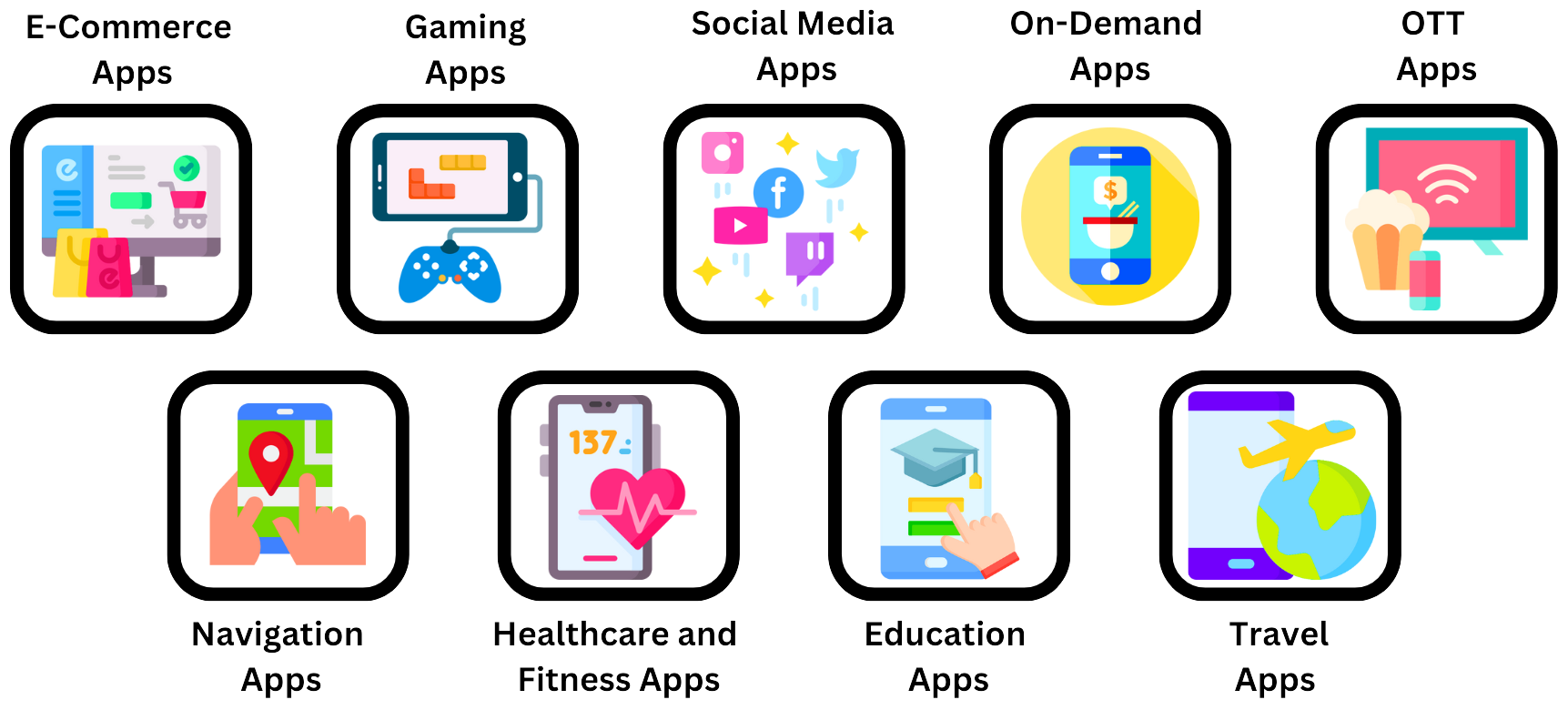
Flutter app development cost varies for several different kinds of apps. In each type of app, the cost depends upon factors such as type, size, complexity, etc. Let us see the cost breakdown of some of the most widely used apps:
[1] E-commerce Apps
E-commerce mobile apps and web apps have a complex UI/UX and a highly sophisticated backend that consists of databases, storage, and security features as well. The cost depends upon some of the following factors such as:
- Payment Gateway
- End-to-End Encryption
- Inventory Management
- Product Reviews
- AR/VR/XR
The cost of an e-commerce app based on Flutter ranges from $50,000 to over $120,000.
[2] Gaming Apps
Video games are generally 2 types, 2D and 3D. 2D games are less expensive to develop as they consist less visual elements. While 3D games have more visual elements and higher processing requirements. Flame Engine is an open-source game engine developed using Flutter. Factors that affect the game app development cost are:
- Graphics
- Multiplayer Integration
- Type of Game Engine
- Complexity
The cost of 2D and simple games starts from $30,000 to over $200,000 for high-end 3D games
[3] Social Media Apps
Social media apps are no less complex and costly to develop than e-commerce apps. Social media apps come in various types and complexities and the cost varies accordingly. Some of the factors that affect the cost are:
- Messaging
- Data Security
- Media Sharing
- Real-Time Updates
In general, social media app development cost lies between $30,000 to over $150,000.
[4] On-Demand Apps
On-demand apps are of various types such as food delivery apps, ride booking apps, grocery delivery apps, etc. Several factors affect the cost of on-demand apps such as:
- Geolocation
- Payment Integration
- Service Provider Management
- Dedicated panels for admin, restaurant owner, etc
The cost of on-demand app development lies between $50,000 to over $100,000.
[5] OTT Apps
Live streaming apps process real-time data to deliver the best quality content to the user. Many streaming apps have end-to-end data encryption and other privacy features that add up to the overall cost. Some factors affect the OTT app development cost:
- Server Infrastructure
- Bandwidth
- Database
- Content delivery
The cost is between $50,000 to over $200,000.
[6] Navigation Apps
Navigation apps are highly complex as they offer accurate real-time location to the user. The user can search any location and the app can provide the best route with turn-by-turn navigation. Some factors contribute to the overall cost such as:
- GPS Integration
- Map Data
- Real-Time Updates
- Voice Assistant
The cost to develop a navigation app using Flutter also depends upon the source of map data. So it lies between $60,000 over $350,000.
[7] Healthcare and Fitness Apps
Healthcare and telemedicine applications are costly to build because of the complexities such as real-time video/message chat, accurate prediction of the right medicines, etc. Some other factors that increase the cost of healthcare apps are:
- Data Security
- Regulatory Compliance
- Integration with Devices
- Third-Party Integration
Health app development cost lies between $45,000 to over $250,000.
[8] Education Apps
Education apps come in different types such as educational games, learning apps, language learning apps, etc. Each one has different requirements and hence the cost varies accordingly. Some other factors are:
- High-Quality Multimedia Content
- User Progress Tracking
- Payment Gateway Integration
- Other Interactive Features
The cost of developing an education app using Flutter is between $40,000 to $200,000 or more.
[9] Travel Apps
Travel apps combine the features of navigation apps also, thus making them highly complex. This complexity leads to higher development costs. Factors that affect the cost are as follows:
- Integration with travel services
- Booking System
- Real-Time Updates
- Navigation System
The travel app development cost can be from $70,000 to over $350,000.
Follow a Step-by-Step Development Approach

1: Requirement Gathering and Analysis
Every Flutter app development project begins with proper research and requirement gathering. The team of analysts and managers organizes meetings with the client to get the details of the app project. Every functional and non-functional feature is noted down and then further analysis of the requirements is conducted. The team then analyzes the requirements and checks the feasibility of the overall project idea. Once everything is approved, an SRS document is made and signed by the client.
Step 2: Planning and Discussion
After the requirements are gathered and analyzed, the second phase begins. In the planning stage, the manager defines the project goals, scope, requirements, timeline, constraints, etc to the team members. The planning stage aims to ensure every team member knows their tasks and also to ensure the risks are minimal. Also, the tech stack to be used in development is selected.
Step 3: Designing the Application
In this stage, the UI/UX designers create some iterations of the proposed design as per the SRS. The team selects the preferred relevant design and creates a prototype of the mobile application to get an idea of how the application would look when fully developed. Then the prototype is shown to the client. Once the client approves it, the full-scale development starts.
Step 4: Developing the App
Now this is the major part of the whole app development process. The project is divided into frontend and backend along as per the SRS and then into smaller modules and given to developers and designers to work on. The development starts with the selected technology (Flutter and Dart) and each module is aimed to be completed within the given timeline. After the development is completed, the testing begins.
Step 5: Testing and Debugging
The testing phase ensures the final application is free of any bugs and errors. Every module goes through various types and levels of testing such as unit testing, integration testing, functional, testing, non-functional testing, user acceptance testing, etc. After the testing is completed, the app is deployed onto the app store.
Step 6: Deployment and Launch
The deployment and launch stage is one of the final stages of the app development life cycle. The mobile application is optimized for Android and iOS devices app stores respectively and extensive marketing campaigns are launched to promote the app to reach a wider audience across the globe.
Step 7: Post-Launch Maintenance and Updates
Following the launch, it remains essential to maintain the app’s operation. Therefore, consistent updates and ongoing maintenance are crucial for keeping the app functional and aligned with market trends. User feedback should be routinely evaluated to enhance features and resolve issues. Furthermore, introducing new functionalities can help differentiate the app in a competitive landscape.
How to Reduce the Flutter Mobile Application Development Cost?
You can follow some simple steps to optimize the Flutter app development cost:
[1] Define Clear Goals and Requirements
The success of a project depends on carefully outlining its goals and requirements, which guarantees that everyone is clear about the app’s objectives and functions. Comprehensive documentation helps reduce scope creep and financial overruns, as all parties reach an agreement on the final product before the start of development. Clear initial guidance allows for concentrated development efforts, thus avoiding expensive revisions in the future.
[2] Select the Right Development Approach
Selecting the appropriate development methodology is vital for effective resource management; an incorrect choice can result in lost time and money. For example, Agile methodologies provide adaptability for projects that are constantly changing, whereas waterfall models are appropriate for projects with defined requirements. The methodology chosen determines the workflow, communication, and testing methods; it must correspond with the project’s complexity and the team’s skill set.
[3] Outsource Development:
Engaging a dedicated Flutter development firm can introduce expert resources and tools, enhancing budget efficiency. A well-regarded company offers experience and established practices, guaranteeing a high-quality product delivered on schedule. Effective communication and clearly defined expectations in the agreement are crucial for seamless collaboration and project management. This approach enables businesses to concentrate on their main strengths while utilizing external expertise for application development.
[4] Create MVP
Creating a Minimum Viable Product facilitates early evaluation and verification of the app’s fundamental features while minimizing costs. An MVP emphasizes crucial functionalities, offering a working model for user feedback and refinement. This strategy lowers initial development expenses by focusing on key features and postponing less critical elements. Feedback from users regarding the MVP directs future development, ensuring that the finished product aligns with market demands.
[5] Develop Cross-Platform Apps
Cross-platform development, utilizing frameworks such as Flutter, allows for the development of a unified codebase that works across various platforms, significantly lowering development expenses. This method guarantees a uniform user experience on both iOS and Android, reducing the need for platform-specific development work. Maintenance costs are also decreased, as updates and bug fixes can be implemented within a single codebase. This approach provides a budget-friendly option for accessing a larger audience without incurring the costs associated with native app development.
[6] Utilize Existing Platforms
Incorporating current APIs and libraries speeds up development by removing the necessity for custom coding, thereby conserving time and resources. Using ready-made templates and UI components simplifies the design process, promoting consistency and efficiency. Cloud-based services and platforms can manage backend functions, lessening development burdens. Relying on existing services shortens development time and decreases the requirement for custom coding.
Select a Reliable Flutter App Development Company
Selecting a trustworthy Flutter application development firm would expose you to the best team of developers and creators. The company has many teams of developers who can create your project of any size in no time. To select the best company, it should prioritize the clients and follow a client-centric approach. It should offer timely project delivery and incorporate end-to-end communication. One such company is Next Olive, which has over 100 Flutter application developers and has a remarkable experience of over 13 years in providing Flutter app development services.
Conclusion
To sum up, determining the cost of your Flutter app isn’t a straightforward process. It involves carefully assessing your app’s functionality and design preferences. Consider it similar to constructing a house; the more rooms and elaborate features you desire, the higher the overall cost. Just as you would seek estimates from various developers, it’s wise to consult multiple Flutter developers to get an estimate of the pricing. Don’t hesitate to pose many questions and be very clear about your requirements. Keep in mind that while budget matters, investing in a high-quality app can yield significant benefits in the future. It’s about striking the right balance between achieving an excellent app and avoiding overspending. Ultimately, your app represents your concept, and ensuring it’s executed properly is worth the effort.
Frequently asked questions (FAQs)
Next Olive is the leading app development company for Flutter that has over 13 years of experience and over 100 expert Flutter mobile app developers. The company has a presence in over 20 countries such as the USA, UK, Saudi Arabia, Malaysia, Australia, etc. You can also hire Flutter developers for your app development projects.
The benefits of Flutter app development are:
[1] Hot Reload Feature
[2] Cross-Platform Development
[3] Extensive Range of Widgets
[4] Native Performance
[5] Engaging and User-Friendly Designs
The time required to develop a Flutter app depends upon the complexity, size, and type of the app.
Basic App: 2 to 3 Months
Medium App: 3 to 6 Months
Large App: 6 to over 10 Months
You can contact Next Olive to hire Flutter developers or hire iOS developers or any freelance developer as per your requirements.

